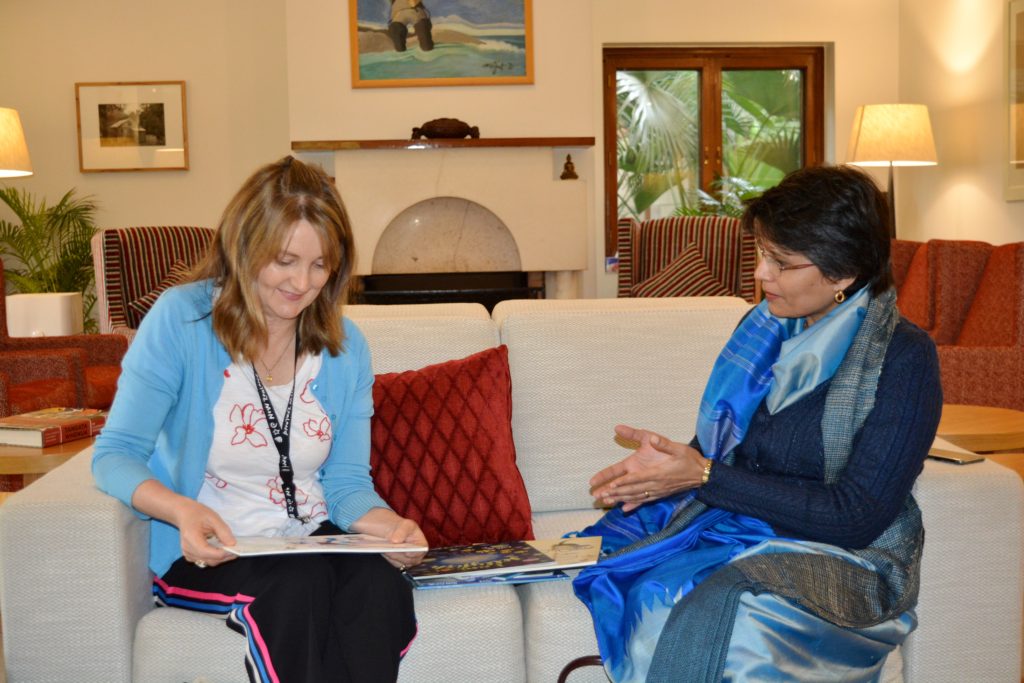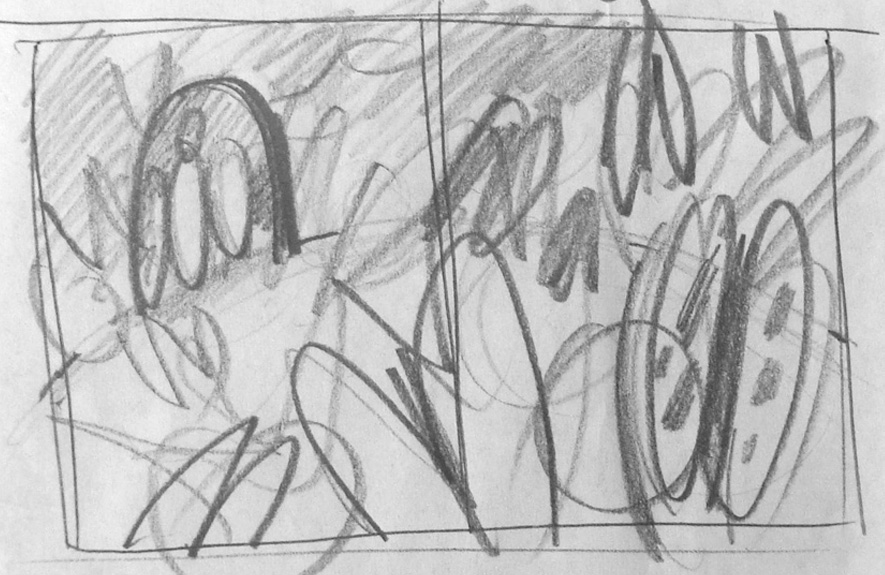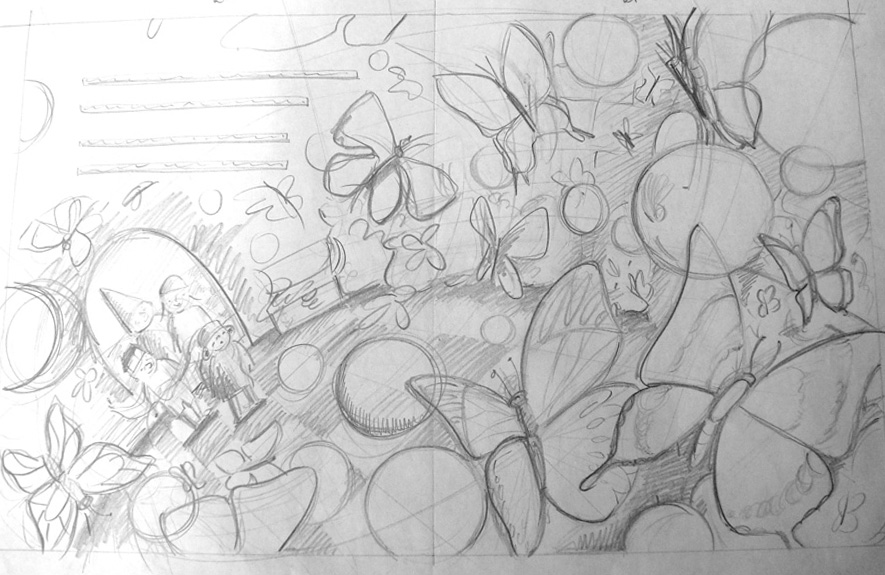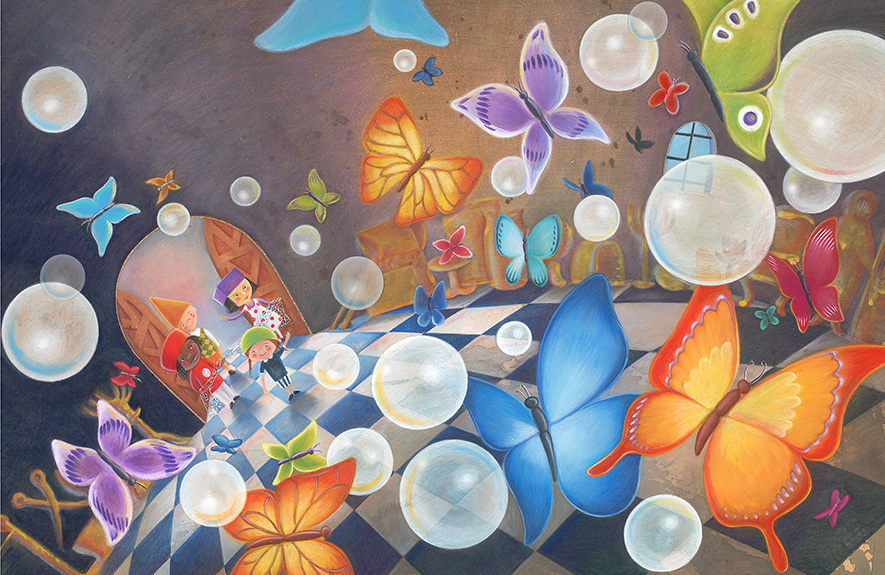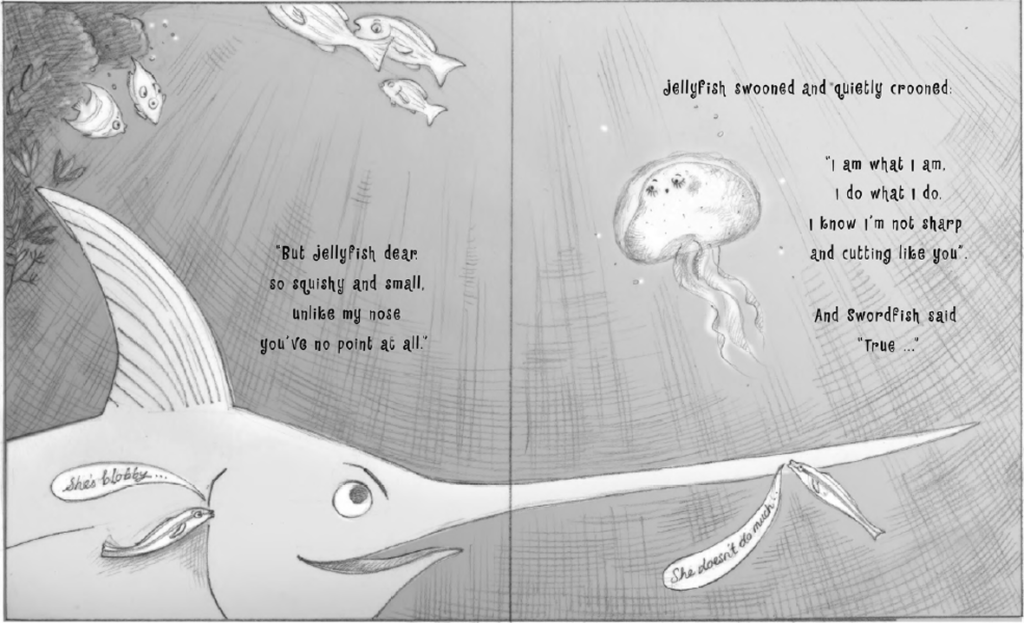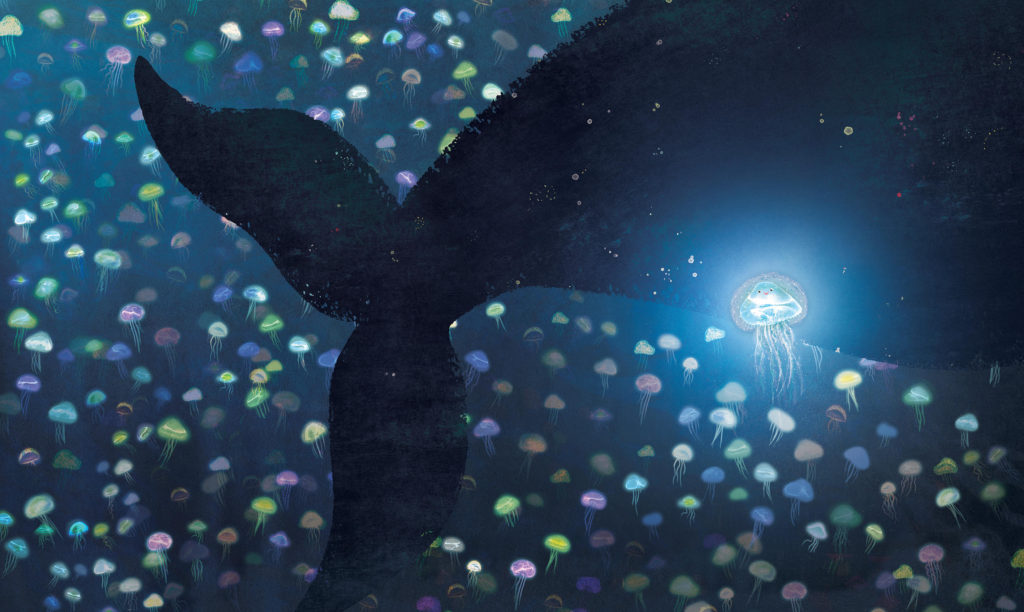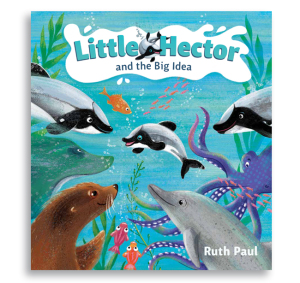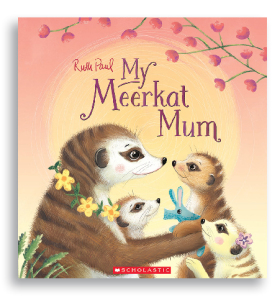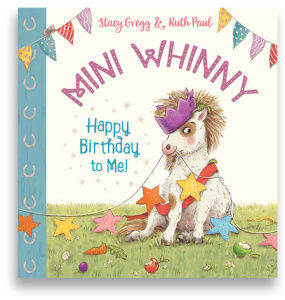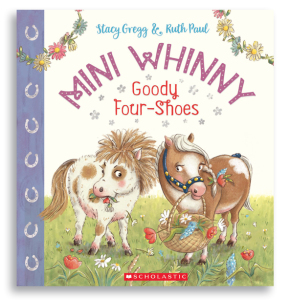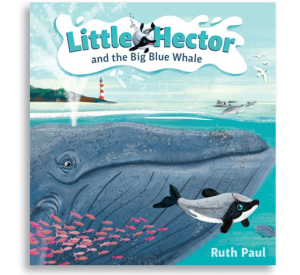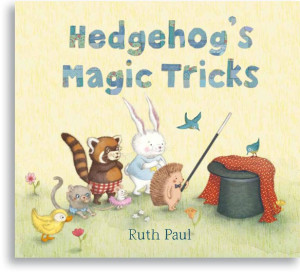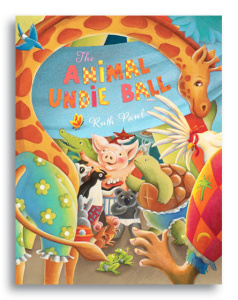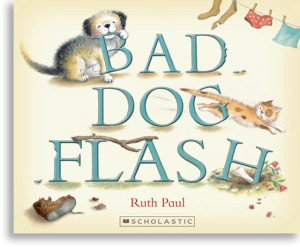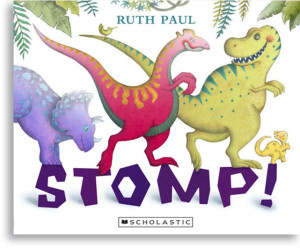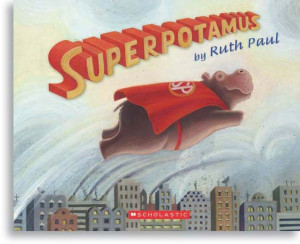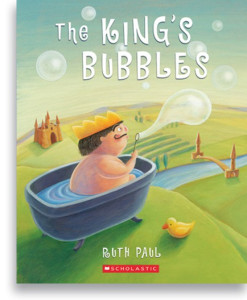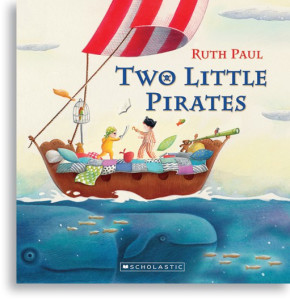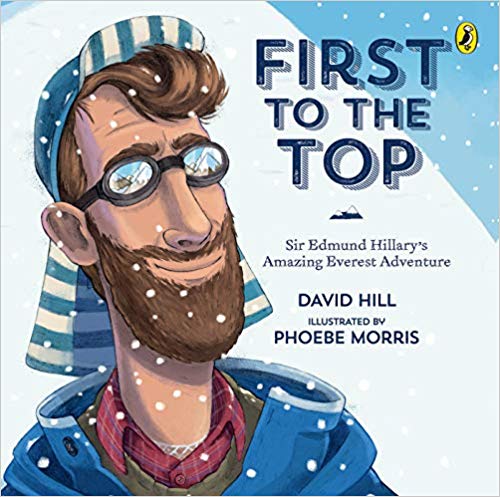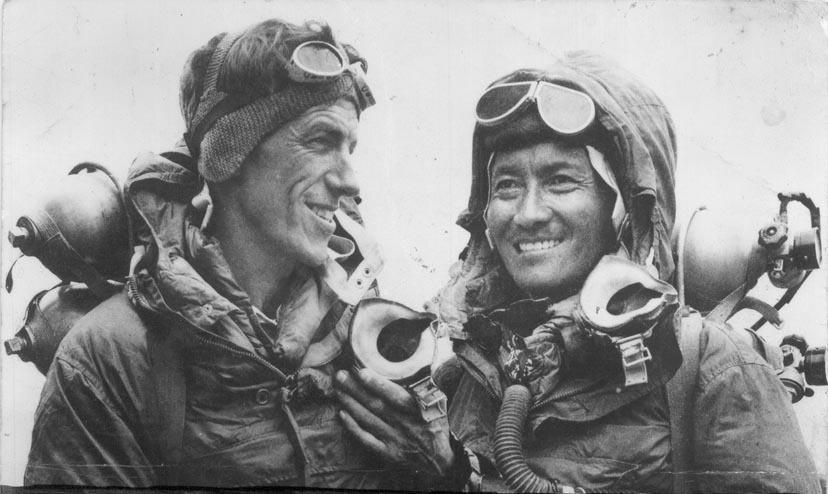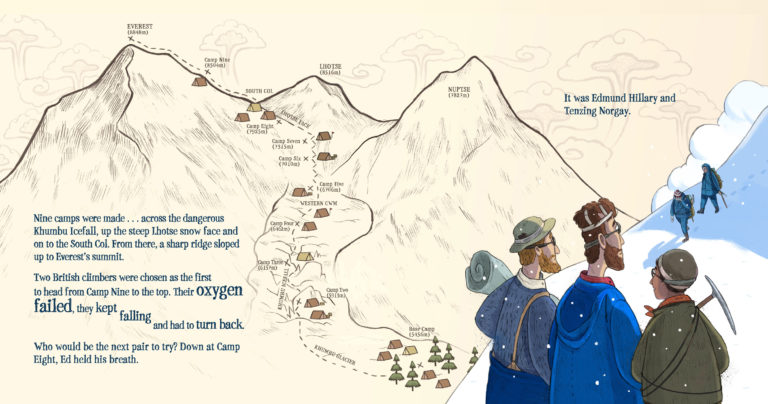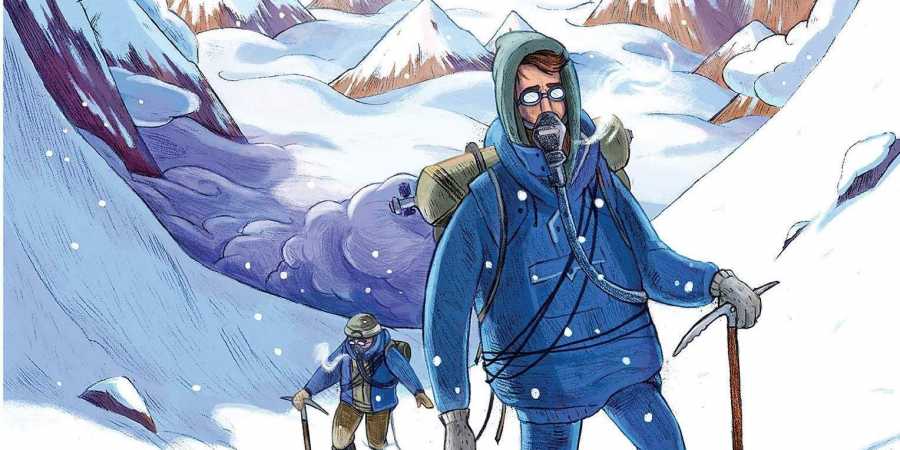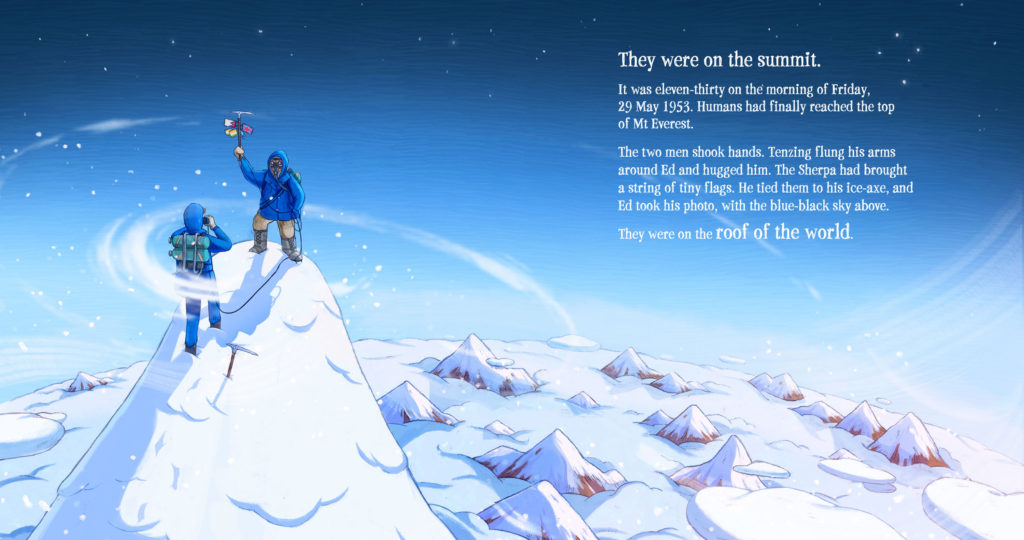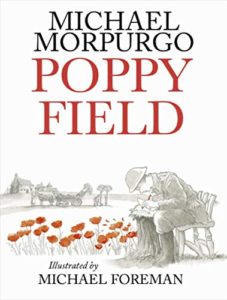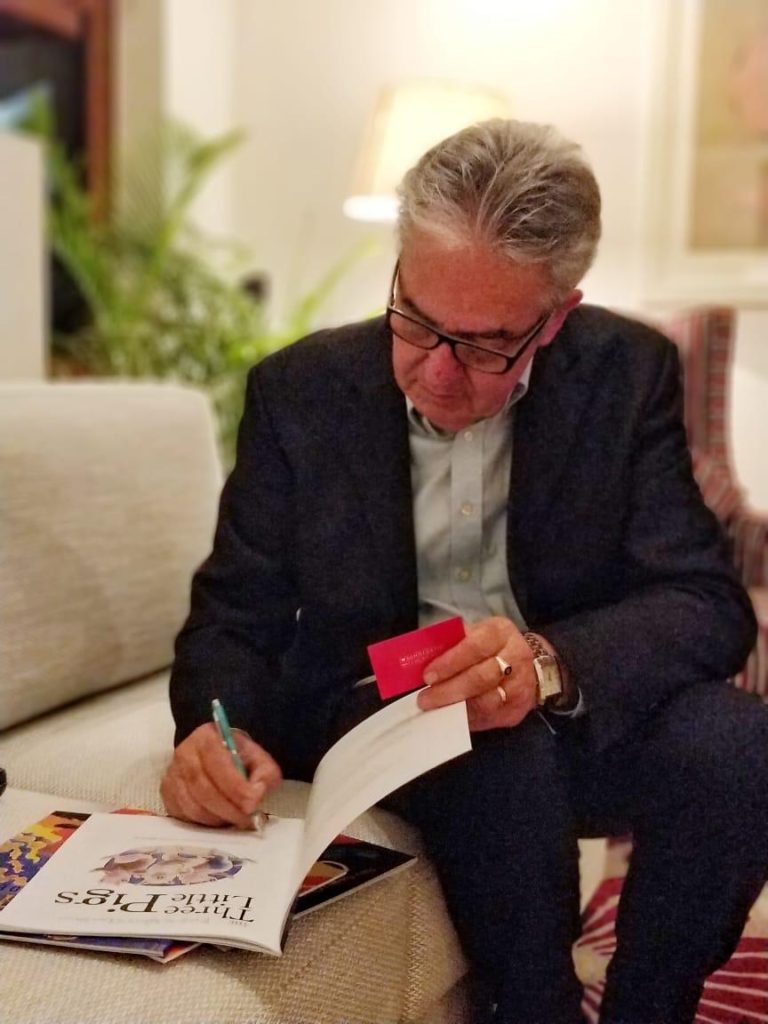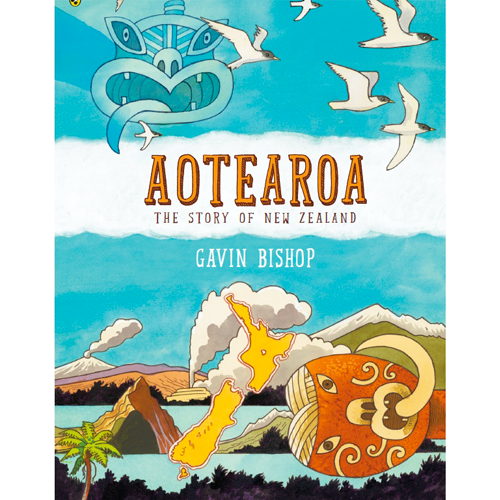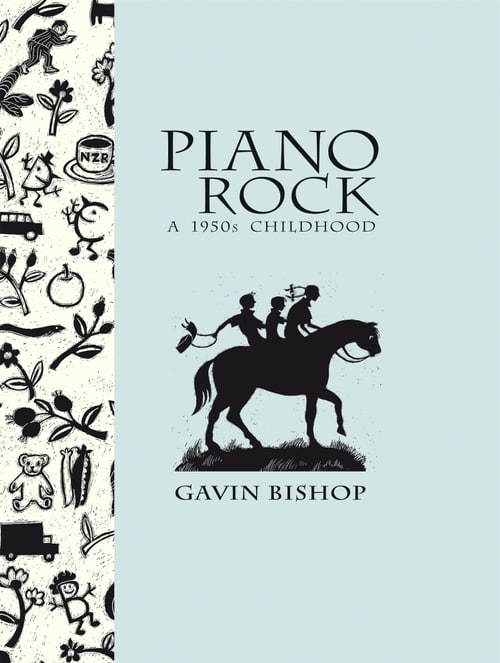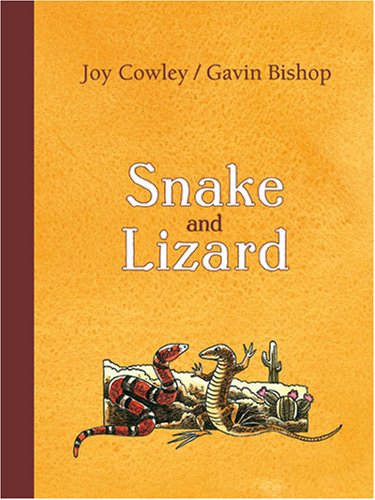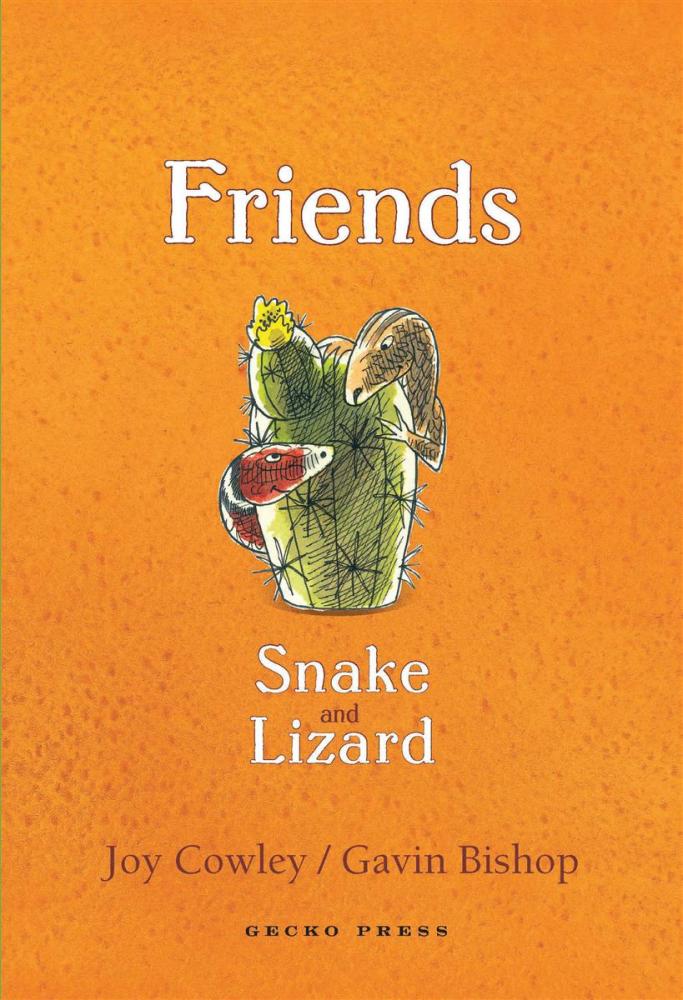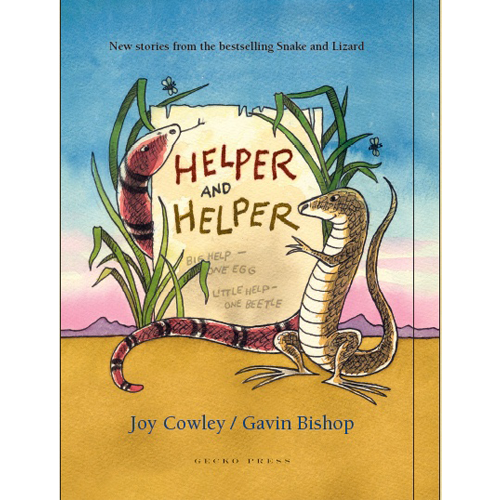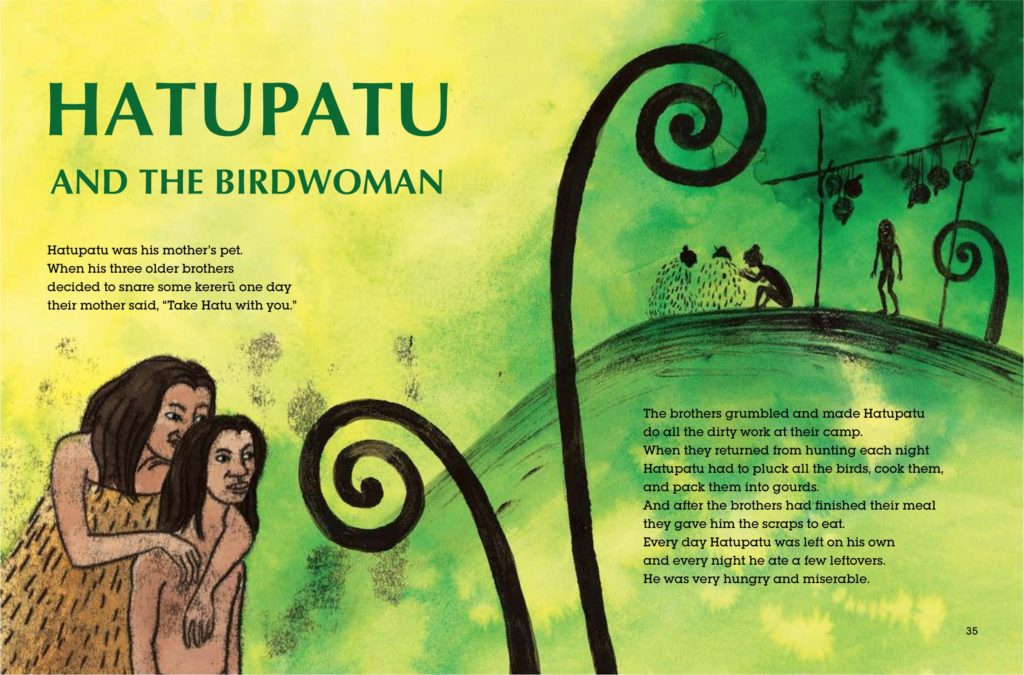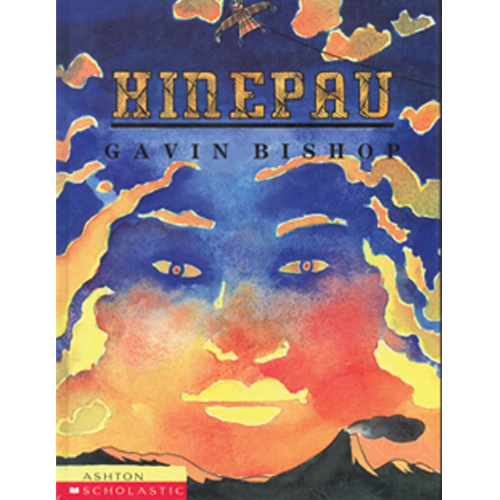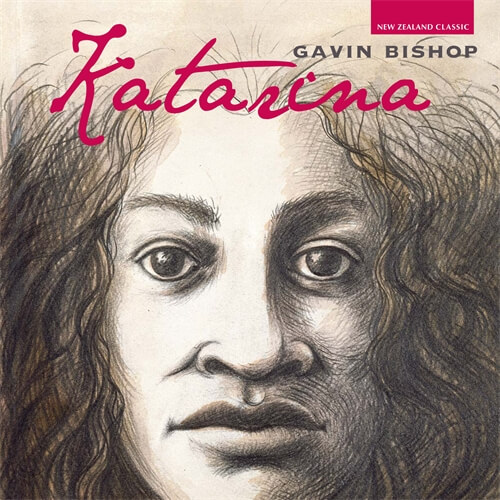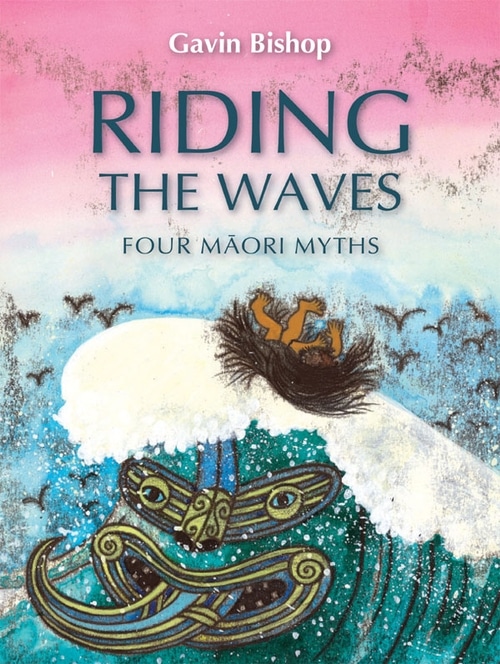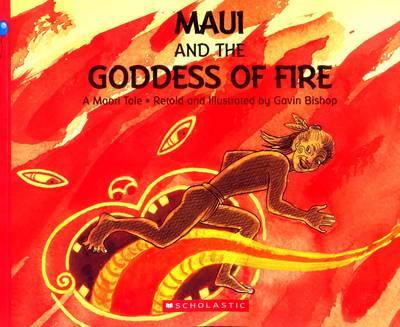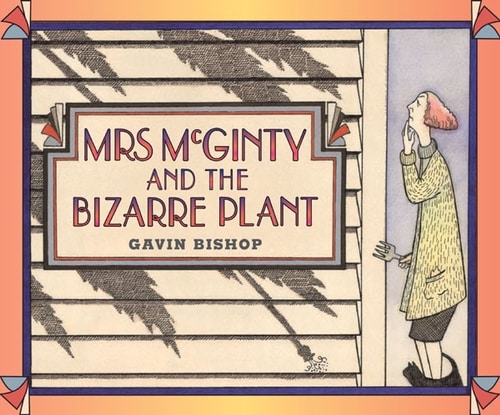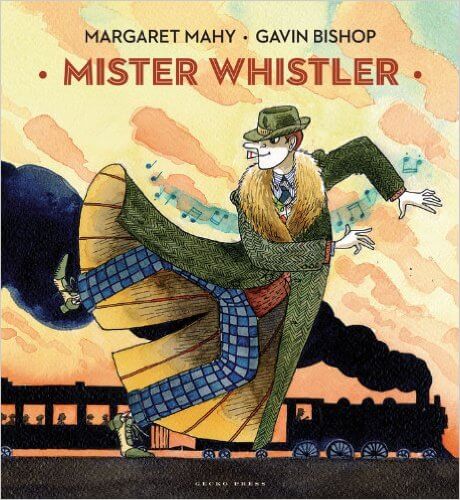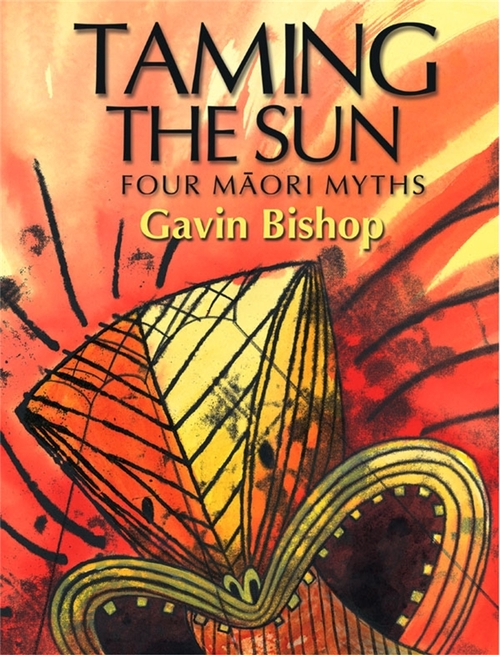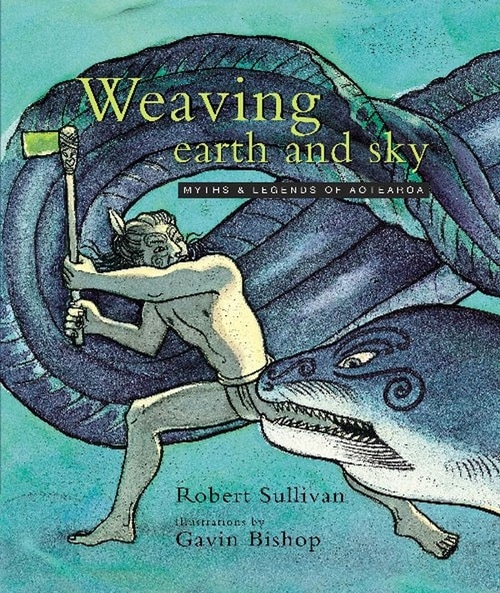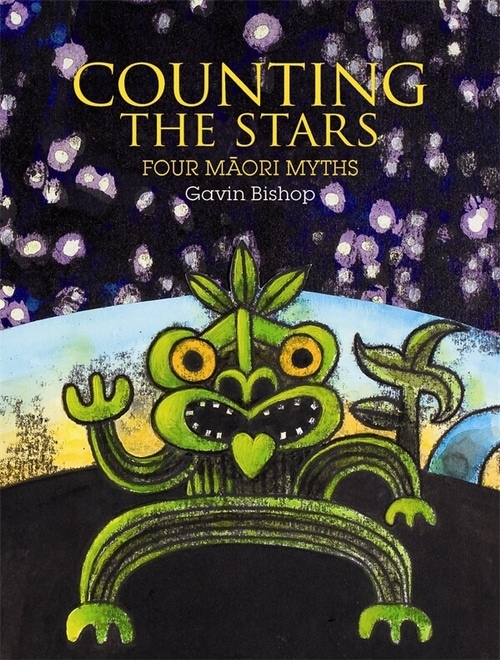Interview with New Zealand picture book author and illustrator, Ruth Paul
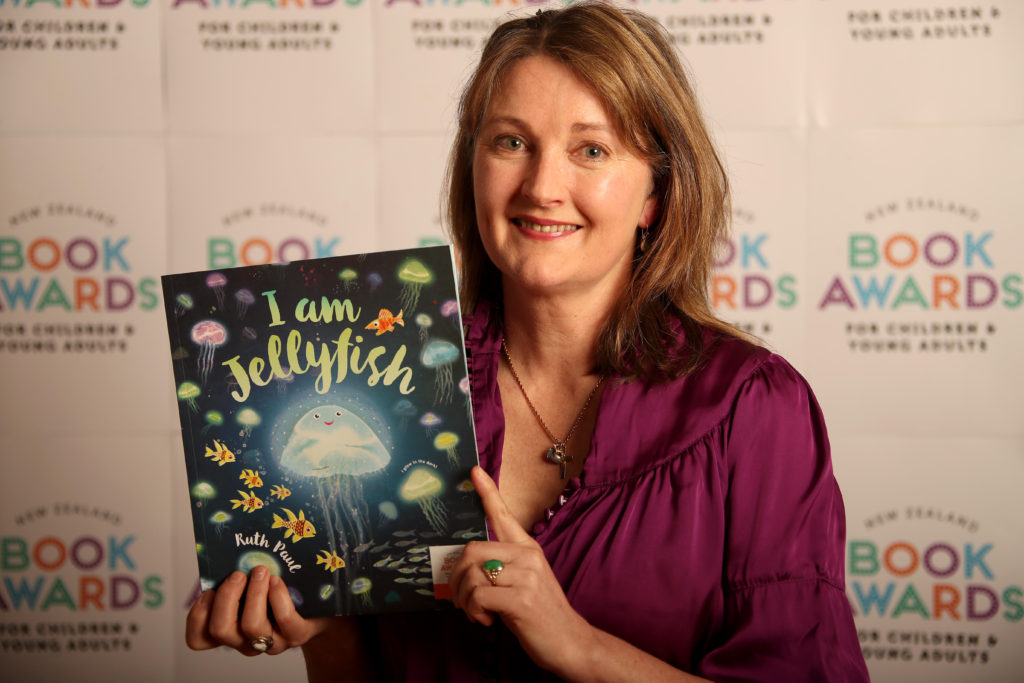
I met award-winning picture book author and illustrator Ruth Paul at the residence of the New Zealand High Commissioner on 4 Dec 2019 for a tête-à-tête. It was such a pleasure meeting Ruth Paul! I had read a clutch of her marvellous picture books, each with its own distinctive style. I had also heard about Ruth from the legendary children’s writer Gavin Bishop. Befittingly we met in the Sunshine Drawing Room as a distinctive characteristic of Ruth Paul’s picture books is her fondness for light and the manner in which she plays with it in her illustrations. It is fascinating to immerse oneself in the artwork.
Ruth Paul has written and illustrated over 20 picture book titles and is a recent recipient of a New Zealand Arts Foundation Laureate Award (August 2019).
I Am Jellyfish recently won the 2018 award for Best Picture Book at the New Zealand Book Awards for Children and Young Adults. Mini Whinny: Happy Birthday to Me! illustrated by Ruth and written by Stacy Gregg is shortlisted for the Best Picture Book Award, 2019. The King’s Bubbles won the Children’s Choice picture book award in 2008, and five of her books have made the Storylines Notable Book List over the years. Stomp was a finalist in the NZ Post Book Awards 2012, and Bad Dog Flash was selected for the US Kid’s Indie Next List in 2014. Her books have sold in New Zealand, Australia, USA, Canada, the UK, China and Korea, with translations in 5 languages. Cookie Boo! Is her first book to be initially published in the USA, with a Harper Collins USA release in summer 2020. Ruth’s poetry is included in A Treasury of NZ Poems for Children, Penguin Random House NZ 2014. Her original picture book illustrations have contributed to touring exhibitions for Painted Stories (previously Te Tai Tamariki Trust) and two are held in the Mazza Collection at the University of Findlay, Ohio.
Ruth lives in an off-grid, straw-bale house on a farm just outside Wellington, New Zealand. As well as writing and illustrating children’s picture books, Ruth has worked as a costume illustrator for Peter Jackson movies. She has two teenaged sons and is actively involved in her local community, having previously chaired her local Community Board and School Board of Trustees. Over the years, Ruth achieved a Bachelor of Arts majoring in English and History from Victoria University, a Diploma in Visual Communication Design from Wellington Polytech (now Massey University), and most of a law degree.
Ruth says every new book is a challenge and presents the opportunity to get better at the craft she wholeheartedly loves.
***
- How do you prefer to introduce yourself as — picture book author / author-illustrator / illustrator? Which came first — illustrator or author? And if it is “illustrator” then when did the transition to “author-illustrator” happen?
I call myself a picture book author and illustrator. A child once called me an “author and alligator”, but my teeth are not so big. I studied design and worked as a commercial illustrator first, illustrating books for a couple of other writers, then eventually wrote my own books. It is more common for author/illustrators to start as illustrators as this appears to be the more time-consuming craft to learn. Now that I do both, however, I’m not so sure.
2. When you envision a picture book — do you write first or do you create illustrations or do both the processes work in tandem?
It used to be that I started with words then added mages later, now it’s more a tandem process. Overall, I try to get a “concept” working first. I see (or wish for) a perfectly formed concept and story – both words and pictures – then I slowly destroy this perfect imagining as I put pen to paper and try to wrestle it into reality. The challenge is to preserve the magic of the story during this process.
3. What are the mediums you prefer to use for illustrations? Do you preserve your art work? Do you rely on digital tools to assist in your illustrations and text design?
I work and have worked in multiple mediums, traditional and digital. Having many techniques available is one of the advantages of previously attending art school. I change my style and technique depending on the needs of the book. Plus, illustrating a 32-page picture book is a big undertaking so I can get bored using the same technique twice in a row. Sometimes I use Photoshop and a Cintiq tablet to draw and I find that digital illustration almost replicates the real mediums and processes now so there’s less of a divide than people think. Whatever medium you use, you still have to be able to draw and compose, to have a sense of colour and communication. I try to change between computer and traditional forms just so I don’t get too reliant on one. I will say that generally publishers prefer me to supply my artwork digitally as opposed to hard-copy now, so that is a cost that needs to considered at the outset.
4. When you embark on a new book project, do you leave book production details to your editors or do you like to be involved in them as well?
I always plan images around words on the page, so I inevitably design the type layout as I go. However, as I use every last minute before book goes to production to work on the images, I leave the typography and final design to the publisher. I am usually always consulted on the final look of things, though often there is little you can change given time constraints. Publishers are very particular about the typefaces they use and you have to give their designers some room to work also.
5. Do your books get translated? If so what are the pros and cons of having picture books translated?
I love seeing my books in translation, but only having one language I usually have no idea what they read like! As some of my stories are in complex rhyme, I can’t imagine they work in any other language. My guess is that the substance not subtlety of the text is translated, for instance, in one of my books a sentence saying “Jump over the hump” in English, with a picture of dinosaurs jumping over tortoises, is (I am told) translated as “Jump over the turtles”. A little less fun, but it does the job.
6. How do you remain so enthusiastic and fresh about storytelling, appealing to a child’s imagination? Do you create picture books with your target audience in mind or is it yourself?
I am an adult writing for the child in myself. Fortunately, the audience for picture books this is both the adult-reader and the child so it shouldn’t be a problem. I myself am easily bored, so I guess that’s where I start when telling a story.
7. What are the essential elements of a picture book? Do you think children’s literature needs to be didactic? Is there a difference in creating picture books for the school market as opposed to those created for leisure reading?
Like most things, I can tell you what a picture book shouldn’t be more easily that telling you what it should be. A picture book shouldn’t be boring, ugly, preachy or mean. It should be intriguing, satisfying and a joy to hold. Obviously books for the school market have to be educationally correct, whereas a trade picture book need only appeal to the buyer’s taste. And we all know it is easier to sell a child chips rather than salad.
I don’t mind books with a message to convey as long as the message is held safely within the story and is not beating it to death with a club. I do like books that leave you with a good “feeling” of some kind, be it safety, quietness or a thought to chew over. I don’t like books that leave a child worried, fearful or over-stuffed.
8. Your sense of perspective especially in the double page spread illustrations is incredible. These seem to have slowly transformed to become the centre point of your later picture books such as The King’s Bubble and I am a Jellyfish. Do you envision your picture books as one long spread or do you see them as a 32-page book at gestation itself?
I am a big fan of the double-page spread. It is a big painting or image with everything in it and I guess I like the logic of a single proposition that conveys all the necessary information. But sometimes vignettes are necessary to explain all the action of a story. The King’s Bubbles was my third book, I Am Jellyfish my sixteenth, but they share a personal sentiment and immersive style even though technically quite different. So I think your question relates to “flow”. I want the child to climb into the world of the book, and I work to make the flow of the page-turn seamless and logical so the spell of that world is not abruptly broken. So – a bit of both?
9. What are the kinds of questions children and adults ask of you? Have you had diverse reactions to the same story?
My favourite question ever was asked at a school in Delhi just recently. It was “If you could live inside one of your books, which one would it be?”. I had to really think about the answer to that. I love that younger kids always want to tell me something about themselves, rather than ask me questions. I will say “Do you have any questions about writing a story or drawing pictures? A question is something where you want to know something from me, and I answer”. Then all the hands will go up and the first questions are inevitably “I know a story!” or “I’ve got a dog!” etc. Cute.
Certain books are for certain audiences. I have picture books that are rollicking good yarns to recite or act out with kids, and some that are for one child only while cuddled up and quiet. There is a book for every situation so the trick is not doing a quiet introspective story with a group of 80 school kids, and vice versa.
10. How much research do your picture books require?
Enough to know you’re not wrong. Enough to know there’s a sound basis for your idea. Enough not to overthink and kill the idea. Enough to add flavour and nuance to the story. Reading everything and anything around your subject always helps to not inadvertently repeat what’s been done before and also to add seasoning.
11. What are the kinds of art forms that you appreciate? Which of these do you think work well in children’s literature or would that be immaterial as long as the illustrator is appealing to the reader’s aesthetic sensibility?
I like folk art because it is not elite, is often telling a story and frequently appeals to a child-like sensibility. I love everything in any art from that blows-my-mind – the extraordinary building, the tiny piece of lace, the kids talent show. I am omnivorous when it comes to art and craft and only know that the older I get the less frequently I am ‘moved’, but when I am, the most surprising things will reduce me to tears. I recently cried during a hip-hop performance, and also when looking at a young girls drawing of a monster. I am moved when I see the feeling – be it vulnerability, bravery, fear, love, joy or sorrow in art. Good art can do that.
12. Who are the artists, illustrators and writers that have influenced you?
Now there’s big question. The answer is in the multitudes and the top of the list rotates from year to year with my changing taste. To narrow it down to children’s authors and illustrators, from New Zealand I love the work of the pre-eminents Gavin Bishop and Lynley Dodd; from everywhere else there’s Emma Chichester Clarke, Roger Duvosin, the Provensons, Brian Wildsmith, Freya Blackwood, Etienne Delessert, Brendan Wenzel, Ayano Imai, Sophie Blackall … there is just so many! I can’t answer this properly!
13 December 2019
List of Ruth Paul’s books:
Trade Books:
The Animal Undie Ball Scholastic 2004
The Little White Lie Scholastic 2005
The King’s Bubbles Scholastic 2007
Superpotamus Scholastic 2008
Two Little Pirates Scholastic 2010
Stomp! Scholastic 2011
Hedgehog’s Magic Tricks Walker Books 2012
Red Panda’s Toffee Apples Walker Books 2013
Bad Dog Flash Scholastic 2013
My Dinosaur Dad Scholastic 2014
Rabbit’s Hide and Seek Walker Books 2014
Go Home Flash Scholastic 2014
Bye-Bye Grumpy Fly Scholastic 2015
What’s the Time Dinosaur? Scholastic 2015
My Meerkat Mum Scholastic 2017
I Am Jellyfish Penguin Random House 2018
Little Hector and the Big Blue Whale Penguin Random House 2018
Mini Whinny, Happy Birthday to Me! by Stacy Gregg, illustrated by Ruth Paul, Scholastic NZ 2018
Upcoming Trade Books:
Little Hector and the Big Idea Penguin Random House 2019
Mini Whinny: Goody Four Shoes by Stacy Gregg, ill. by Ruth Paul,Scholastic 2019
Cookie Boo! Harper Collins USA 2020
Little Hector Meets Maui Penguin Random House 2020.
Mini Whinny: Bad Day at the OK Corral by Stacy Gregg, ill. by Ruth Paul, Scholastic 2020.

